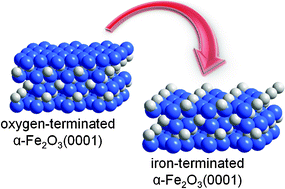Polarity and surface structural evolution of iron oxide films
Abstract
Various ordered Fe oxide films were prepared in an ultrahigh vacuum system, and their surface and electronic structure were studied in situ by

Maintenance work is planned for Wednesday 1st May 2024 from 9:00am to 11:00am (BST).
During this time, the performance of our website may be affected - searches may run slowly and some pages may be temporarily unavailable. If this happens, please try refreshing your web browser or try waiting two to three minutes before trying again.
We apologise for any inconvenience this might cause and thank you for your patience.
* Corresponding authors
a
Beijing National Laboratory for Condensed Matter Physics, Institute of Physics, Chinese Academy of Sciences, P.O. Box 603, Beijing, P. R. China
E-mail:
qlguo@iphy.ac.cn
Fax: 86 10-82649228
Tel: 86 10-82649435
Various ordered Fe oxide films were prepared in an ultrahigh vacuum system, and their surface and electronic structure were studied in situ by

 Please wait while we load your content...
Something went wrong. Try again?
Please wait while we load your content...
Something went wrong. Try again?
S. Liu, S. Wang, J. Guo and Q. Guo, RSC Adv., 2012, 2, 9938 DOI: 10.1039/C2RA21892E
To request permission to reproduce material from this article, please go to the Copyright Clearance Center request page.
If you are an author contributing to an RSC publication, you do not need to request permission provided correct acknowledgement is given.
If you are the author of this article, you do not need to request permission to reproduce figures and diagrams provided correct acknowledgement is given. If you want to reproduce the whole article in a third-party publication (excluding your thesis/dissertation for which permission is not required) please go to the Copyright Clearance Center request page.
Read more about how to correctly acknowledge RSC content.
 Fetching data from CrossRef.
Fetching data from CrossRef.
This may take some time to load.
Loading related content
